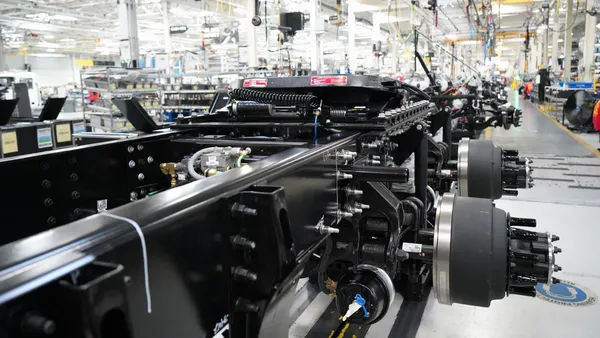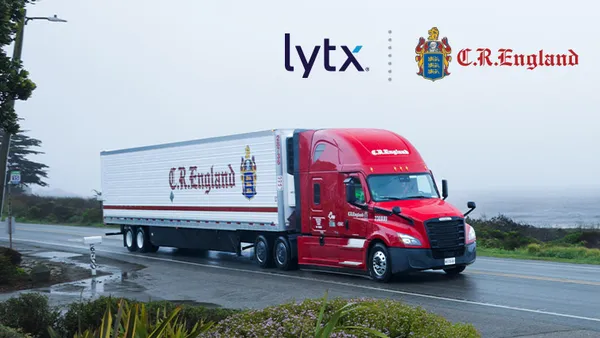The cost of trucking reached a new all-time high in 2023 at $2.27 per mile, according to an annual report from The American Transportation Research Institute.
The increase, though, was less than 1% and subdued by declining fuel costs, which decreased from 64 cents per mile to 55 cents in terms of average marginal costs.
“Most costs other than fuel rose during 2023, but they did so at only half the rate experienced during the previous two years of unprecedented cost spikes,” the report said.
Leading the bulk of cost of trucking expenses was driver wages, which were up 7.6%. But that uptick was much lower than the previous year’s surge of 15.5%.
Going forward, driver pay may continue to moderate in 2024, following double-digit increases in recent years, according to the report.
Also, starting last year, safety bonuses eclipsed starting bonuses for the first time, averaging $1,831, the report noted.
A key increase for trucking costs was premium expenses, which increased by 12.5% in 2023.
Equipment payments, driver wages among key factors in rising costs
That’s just the average, and some fleets saw even more than double that amount last year. Trucks are more expensive, litigation continues to loom over the industry, and persistent inflation are all factors.
Even more, upticks are pressuring rates higher in 2024. Based on a slightly different measure, governmental price index data, commercial auto premium costs are rising roughly 3% higher year over year, FTR VP of Trucking Avery Vise told Trucking Dive last week.
“That has been rising steadily for the last year,” Vise said, adding that data on insurance premiums for April and May 2024 has accelerated somewhat.
Another major factor on overall costs? Equipment payments for trucks and trailers also rose significantly — at 8.8%.
Meanwhile, fuel trends in early 2024 suggested reduced costs could continue. Downward pressure dropped prices to two-year lows earlier this year, and fuel rates for the remainder of the year are projected to be lower than that of 2022, according to ATRI.
Fuel costs have muddied what’s really happening in the industry, though. Excluding fuel, “total marginal costs increased in the truckload sector (by 3.9%) and remained flat in the specialized sector” while LTL shot up 15.6%, per the report.
In particular, LTL driver wages shot up much higher in 2023 than they did the year prior. That came as firms competed to take on Yellow Corp. drivers as the company shuttered, helping remaining firms land enviable operating margins.
“This market disruption helped LTLs achieve an average operating margin of 12% — twice as high as any other sector — which many passed on to drivers in the form of higher pay,” the report’s lead author, Alex Leslie, told Trucking Dive in an email.












